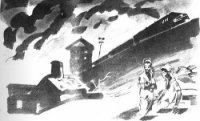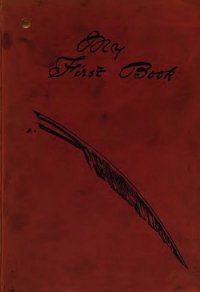Operation Nemesis: The Assassination Plot that Avenged the Armenian Genocide - Bogosian Eric (мир книг .txt) 📗
After a full day on the train from Geneva, followed by an apprehensive cab ride across Berlin, Tehlirian arrived cold and hungry at the Tiergarten Hotel around ten p.m. on December 3. He found his contact hunched over a Turkish-language newspaper. The man did not look up. Instead he pointed to a newspaper article reporting on the various Turkish expat factions squabbling amongst themselves in Berlin. He whispered, “The big game is indeed here.”2
The Armenians would be trying to find one man among a population of four million. To make the pursuit more difficult, the city these men had entered to hunt their “big game” was teetering on the brink of chaos. This was Weimar Berlin, the metropolitan center of a country still reeling from years of pointless war. Two million German soldiers had died, while the surviving demobilized veterans had little to show for their service. Unemployment was soaring. Soon, hyperinflation would reduce the German mark to worthless paper. What was worse, the punitive treaties about to be signed with the French would further humiliate the defeated nation and hobble the economy for years to come. In January, Germany would be ordered to pay 226 billion gold marks.3 Vast border territories had been partitioned and handed off to Poland and France. The war had left a sour taste in everyone’s mouth.
Enraged at the Kaiser, German citizens had abandoned the monarchy altogether and embraced what would become known as the Weimar Republic. This new parliamentary government was an unstable mess, allowing dozens of extremist political parties to rise up and flourish. These armed factions literally fought each other in the streets. Among them were the “Freikorps” reactionaries, mostly disaffected veterans who would later morph into the SA (Sturmabteilung), or “Brownshirts,” of the Nationalsozialistische Deutsche Arbeiterpartei—the Nazi Party. In early February, the NSDAP would hold its biggest rally yet, at Circus Krone.4
Extremism radicalized every aspect of German life. A heady mix of modernism and postwar euphoria gave way to a permissive and lawless underground. “The streets became ravines of manslaughter and cocaine traffic, marked by steel rods and bloody, broken chair legs.”5 Friedrich Bayer & Company had invented a new wonder drug called heroin, which joined alcohol and tobacco as a scourge of the masses. Only a few years earlier, Stravinsky, Schoenberg, Picasso, and Duchamp had tossed realism out the window; now reality itself had become surreal. The decadence and near-anarchy of the Weimar Republic provided a perfect backdrop for the rise of Hitler’s thugs, men who would soon sweep away an inconvenient legal system and usher in the Third Reich. This was the anarchic atmosphere in which the Nemesis conspiracy found itself in Berlin.
The circle of Armenian conspirators was led by the deeply committed Shahan Natali (born Hagop Der Hagopian in 1884 in Kharpert), a histrionic man whose short stature and idiosyncrasies were offset by his intensity and dedication. Natali had lost both his father and an uncle during the Hamidian massacres twenty-five years earlier, and he remained burdened by memories of helping his tearful mother bury his murdered father. In 1904, twenty-year-old Natali had joined the ARF, then immigrated to Watertown, Massachusetts, where he found employment at a shoe factory. In 1908, after the Young Turk revolution brought the CUP to power, Natali returned to Turkey; like many, he believed that a new day had dawned in the Ottoman Empire. After the Adana massacres chilled Armenian-Turkish relations, Natali returned to the United States to study philosophy and theater at Boston University. By 1912, eager to reenter Turkey, he traveled first to Greece, but as an Ottoman citizen, he was prevented from crossing the border at passport control. Returning to Boston one more time, where he would become an editor of the ARF newspaper, Hairenik, Natali was consumed with rage as he tracked the wartime action from thousands of miles away. Nothing about Natali’s feelings regarding “the Turk” was moderate. His hatred was deep and his focus absolute.
While logistical support and financing were run by Aaron Sachaklian,6 a CPA living in Syracuse, New York, Natali remained in Europe and kept close watch over the agents in Berlin. In addition to Tehlirian, the group included “Hrap” (Hrach Papazian, going by the alias “Mehmed Ali”),7 “Vaza” (Vahan Zakarian),8 “Hazor” (Hagop Zorian),9 and “Haigo” (Haig Ter-Ohanian).10 Code names were consistent with a system used to befuddle the sultan’s spies going back to the 1890s. (In correspondence between the conspirators, Tehlirian would be referred to as “Simon Tavitian” or “the engineering student.”) Assisting this core group were expat Armenian artists and writers living in Berlin.11 Armenian diplomats based in Europe who had been associated with the republic facilitated passport and visa paperwork. Newspaper offices and embassies provided enough middlemen to handle communications and logistics. According to Marian Mesrobian MacCurdy in her book, Sacred Justice, Shahan Natali bribed border guards and police in Berlin to alert him to the comings and goings of Turkish nationals in Germany.12
Oblivious to the politically unstable world of the Weimar Republic surrounding him, Tehlirian saw the city of Berlin as nothing more than a vast and complex maze in which to track his quarry. Upon his arrival, he learned that his fellow agents had already deduced that a small tobacco and carpet shop near the Tiergarten was owned and operated by Djemal Azmi, the infamous former governor of Trebizond. The shop, visited only by Turks, existed as a kind of nerve center for the Ittihadists living in the city. Publicly, Azmi presented himself as an immigrant merchant, but the Armenian spies knew his resume well. His list of war crimes was long. The tribunal in Constantinople had sentenced Azmi to death in 1919. Like Talat, Azmi had eluded capture by both the current Turkish government and the British. His name was high on the Nemesis hit list.
Tehlirian wanted to storm the shop and “shoot the dog.” But Azmi was not “Number One,” and Tehlirian opted to stand down. “It was important to act cautiously and not allow the prey [Talat] to escape.” Natali had warned Tehlirian that although there were many who deserved to die, he must not forget that Talat was unique in the eyes of the world. In other words, this operation needed resonance beyond revenge. The killing would have to appeal to the sympathies of a world outraged by the Armenian massacres.
Joining the stakeout was twenty-seven-year-old Hazor, who, unlike the sorrowful Tehlirian, was easygoing and affable. Once again Tehlirian was put off by an Armenian’s apparent lack of grief. He felt the same confusion he’d experienced when meeting with the organizers in Massachusetts. How could this man smile and tell jokes? How could anyone from back home ever smile again? In fact, Tehlirian’s brooding nature set him apart from his fellow commandos. His motivation to find and kill Talat was born out of something deeper than anger or the need for revenge. Something deeply mournful that sought to appease the need of those who were no longer alive. In this respect he was different from the others with a more straightforward determination.
Some of the fedayeen found the hunt for the Ittihad criminals to be an adventure, a thrilling game of cat and mouse. Others, like the politically violent everywhere, had always been tough characters, inured to bloodshed. They had always been at war with the Turks. Their reflexive response to the crimes of the CUP was to push back, hard. All were men who lived through action, obeying a simple code: an eye for an eye. If Turks committed atrocities against Armenians, they, as Armenians, would commit atrocities against Turks. It was that simple.




